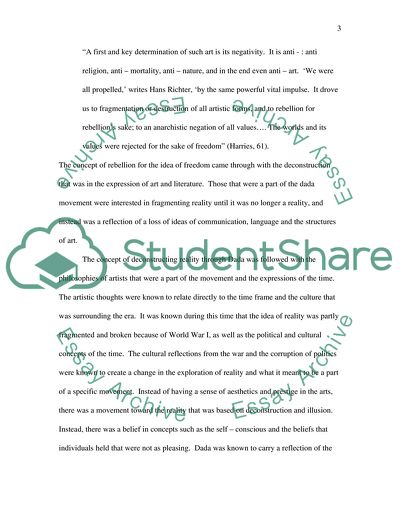Cite this document
(The Deconstruction of Art and Performance in Dada Coursework, n.d.)
The Deconstruction of Art and Performance in Dada Coursework. Retrieved from https://studentshare.org/culture/1738978-dada-theatre-and-the-avant-garde
The Deconstruction of Art and Performance in Dada Coursework. Retrieved from https://studentshare.org/culture/1738978-dada-theatre-and-the-avant-garde
(The Deconstruction of Art and Performance in Dada Coursework)
The Deconstruction of Art and Performance in Dada Coursework. https://studentshare.org/culture/1738978-dada-theatre-and-the-avant-garde.
The Deconstruction of Art and Performance in Dada Coursework. https://studentshare.org/culture/1738978-dada-theatre-and-the-avant-garde.
“The Deconstruction of Art and Performance in Dada Coursework”, n.d. https://studentshare.org/culture/1738978-dada-theatre-and-the-avant-garde.


